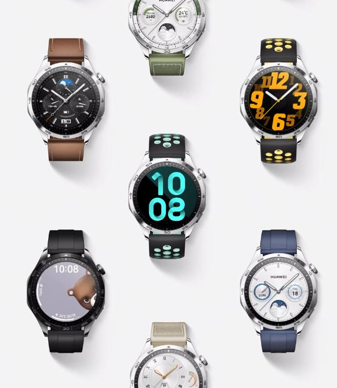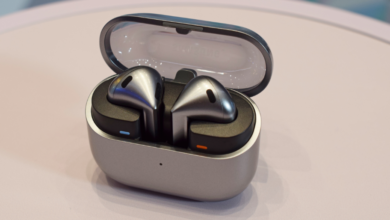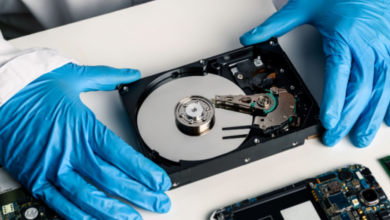Can Wearable Watches Improve Sleep Habits?

Wearable technology has become an integral part of managing personal health. These devices, with their advanced sleep-tracking capabilities, promise to optimize rest by monitoring sleep patterns and suggesting improvements. As sleep quality deeply affects overall health, understanding how wearable watches contribute to enhancing sleep habits is crucial. While they offer detailed insights into sleep stages and habits, understanding the technology behind them and their effectiveness is vital. This blog explores how wearable watches track sleep, encourage behavior changes, and considers the limitations in relying too heavily on technology for restful nights.
How Wearables Track Sleep?
Wearable watches track sleep using a combination of sensors and algorithms. These devices monitor movements, heart rate, and environmental factors to provide a comprehensive overview of sleep quality and patterns.
Sensors Behind Sleep Data
At the heart of wearable watches lie a variety of sensors designed to capture different aspects of sleep. Accelerometers detect movement, allowing the device to distinguish between wakefulness and various sleep stages. Photoplethysmography (PPG) sensors measure heart rate by detecting blood volume changes in the microvascular tissue. Some wearables incorporate temperature sensors to monitor changes in body temperature, which can signal different sleep phases. These sensors work together to build a detailed sleep profile, providing insights such as total sleep time, disturbances, and the balance of deep, light, and REM sleep. This data is processed by algorithms to generate reports that users can interpret to improve their sleep routines.
Sleep Stages, HRV & Smart Alarms
Wearables track sleep stages by analyzing heart rate, movement, and sometimes temperature. During sleep, the device records these metrics to determine if the wearer is in REM, light, or deep sleep. Heart Rate Variability (HRV) is another feature assessed, offering insights into the wearer’s autonomic nervous system activity and overall restfulness. Wearable watches also often include smart alarms that wake users at optimal times in their sleep cycles, reducing grogginess. This combination of tracking and smart features empowers users to understand their sleep patterns better and make informed decisions about improving sleep hygiene.
Behavior Change Through Feedback
Feedback from wearables encourages users to rethink and modify their sleep behaviors. This data-driven approach empowers users to adopt healthier sleep habits.
Insight-Driven Habit Shifts
Wearables provide detailed analytics on sleep patterns, enabling users to make informed decisions. By analyzing trends in sleep duration, quality, and disturbances, individuals become more aware of factors affecting their sleep. This awareness often translates into actionable habit changes; for instance, recognizing the impact of late-night screen time or caffeine on rest quality. Users can adjust their lifestyles, like setting regular sleep schedules or creating calming pre-sleep routines, to improve rest. The constant feedback loop helps reinforce positive changes, gradually leading to sustained improvements in sleep habits and overall health.
Smart Reminders & Bedtime Prompts
Many wearable devices come with features like smart reminders and bedtime prompts that guide users towards healthier sleep routines. These alerts can range from reminders to begin winding down at the end of the day to encouraging consistent sleep schedules. Bedtime prompts may suggest relaxation activities such as reading or practicing mindfulness—all simple changes that cumulatively enhance sleep quality. By nudging users toward beneficial actions, the wearables become a personal coach, cultivating improved sleep hygiene and reinforcing new habits.
See also: How modern tech is revolutionizing cargo inspection and security
Limitations & Risks
Despite their potential, wearables come with limitations and possible risks. Users should recognize these drawbacks to utilize wearable technology effectively and mindfully.
Accuracy Concerns & Data Anxiety
The accuracy of sleep data from wearables can vary. While the technology behind these devices continues to improve, external factors like fit, sensor contact, and environmental conditions can affect data accuracy. Inaccurate data could misguide users, leading to unnecessary stress or anxiety about their sleep health—termed “data anxiety.” In some cases, users may become overly fixated on sleep scores, leading to stress rather than relaxation when resting. It is vital to interpret wearable data as guidelines rather than absolute measures.
Over-reliance & Orthosomnia
Over-reliance on wearables for sleep monitoring may result in orthosomnia—a condition where individuals become obsessively focused on improving wearable-generated sleep scores. This fixation can paradoxically degrade sleep quality by elevating stress and sleep-related anxiety. When users rely too heavily on quantitative data over their own body’s signals and needs, it can result in ineffective sleep management. To avoid this, users must balance data with personal awareness and not let technology override the natural cues of their bodies.
Tips to Use Wearables Wisely
To maximize their benefits, users should employ wearables wisely. Start by focusing on the long-term trends in sleep data rather than night-to-night fluctuations, using the information to identify areas for consistent improvement. Establish realistic sleep goals based on wearable insights and incorporate them into a holistic approach that includes good sleep hygiene practices like a regular sleep schedule, a relaxing bedtime routine, and a sleep-friendly environment. It’s crucial not to become overwhelmed with details but to embrace broader patterns that assist in establishing sustainable habits. Keep in mind that while wearables are excellent tools, they are most effective when combined with personal insights and adjustments.

Conclusion
Wearable watches can be valuable allies in enhancing sleep habits by providing personalized feedback and insights. Nonetheless, users must approach their sleep data with the understanding of its potential limitations and the risks of over-reliance. By using wearables as a guide rather than a strict authority, individuals can foster improvements in their sleep routines and overall well-being. With modern innovations like the huawei gt6 pro, these devices continue to evolve, combining advanced health tracking with lifestyle features that promote balanced rest. When paired with conscious self-monitoring and lifestyle adjustments, they encourage an informed approach to better rest, leading to positive long-term habit changes.






